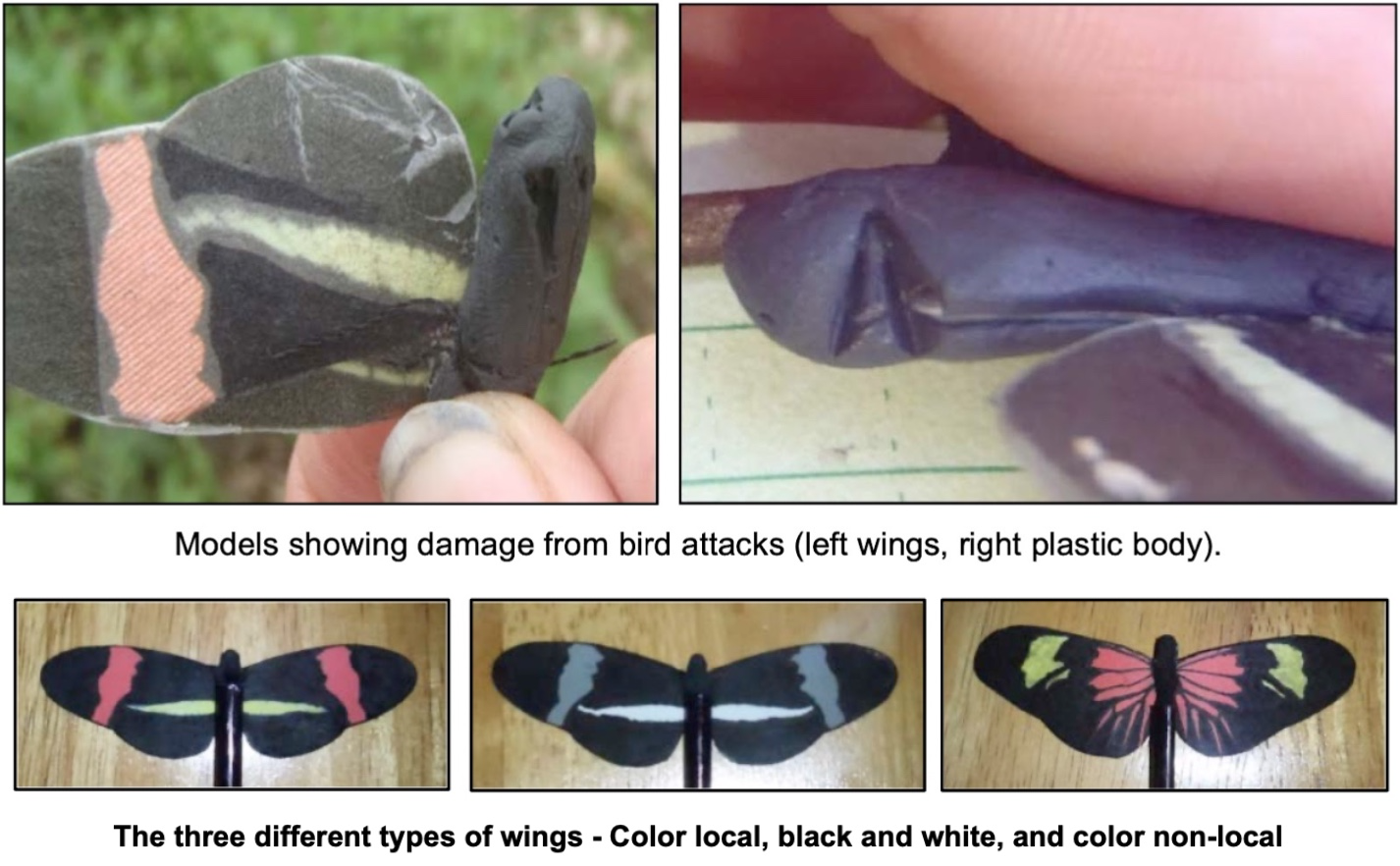Why are butterfly wings colorful?
This dataset and content is provided our by our friends at Data Nuggets. Visit DataNuggets.org to see the original activity and additional materials
Featured scientists: Susan Finkbeiner, Adriana Briscoe, and Robert Reed from University of California, Irvine
Background:
You've probably noticed a bright orange butterfly in your garden. It's hovering over a plant, and then pausing to lay an egg. It's landing on a flower, and then sipping the tasty syrup. Big wings allow butterflies to fly everywhere with ease. But you may wonder, why are their wings so brightly colored? One reason why butterflies might have brightly colored wings is that these colors warn birds and other predators that they would not make a tasty meal.
Another potential reason for butterflies to have bright colors and dramatic patterns is to attract mates. However, there is little research that shows whether color alone or color pattern together deter predators or attract mates.
The red postman butterfly
Susan holding a different species of butterfly in the field.
The red postman butterfly lives in rainforests in Mexico, Central America, and South America. The color pattern on its wing is usually a mix of red, yellow, and black. These patterns vary a lot depending on their location; for instance one variant has a red bar on the forewings and a yellow bar on its hind wings while another variant has red rays on the hindwings and a yellow bar on the forewings. Scientists Susan, Adriana, and Robert have been studying this species for many years. While hiking in the rainforest, they noticed that not all butterfly species are brightly colored. They started to wonder why the red postman butterfly has bright colors, but other species do not. They thought maybe the red and yellow colors and patterns signaled toxicity to predators, like birds; or these wing features may be used to help find and attract mates. Susan, Adriana and Robert predicted that brightly colored butterflies would be avoided by birds and approached more often by other butterflies of the same species. They also predicted that the local color pattern would get the strongest response from predators and mates, because it would be most recognized in that area.
To test their ideas, the team of butterfly scientists created three kinds of artificial red postman butterfly models using paper and a printer. Each model had a plastic body and paper wings. Model A had the same pattern as the local butterflies at the study site in the La Selva Tropical Biological Station in Sarapiquí, Costa Rica, with brightly colored red and yellow wings. Model B also had the same pattern as the local butterflies, but only had black and white tones. Model C had a different pattern than the locals with bright red and yellow colors.
To test for differences in predation attempts based on wing color and patterns, they placed 4 of each model at 100 different sites in the rainforest. This made a total of 1,200 model butterflies with 400 of each type! Models were placed far enough apart that they were not within human visible range from one another (on average separated by 5-10 m), and were positioned approximately 1.5 m above the ground, which is consistent with natural roosting heights. The models were left out in the forest for a total of 96 hours.
Each day they were inspected and counted for bird beak marks on their wings and plastic bodies. Only new marks were scored each day, so attacks on individual models were only counted once. To test whether red postman butterflies were more attracted to bright colors, or the local wing pattern, Susan and her student field assistants also caught 51 wild red postman butterflies from the rainforest and brought them to a greenhouse. They then presented the live butterflies with the three models and counted how many times they approached each model type
Scientific Question: How does color and color pattern affect the behavior of birds and butterflies?
Scientific Data:
1. Find the two hypotheses in the Research Background and copy/paste them below. A hypothesis is a proposed explanation for an observation, which can then be tested with experimentation or other types of studies. Having two alternative hypotheses means that more than one mechanism may explain a given observation. Experimentation can determine if one, both, or neither hypotheses are supported.
2. What data will you graph to answer the question?
Independent variable:
Dependent variable:
3. Make a graph using your selected variables, and screenshot it below:
4. Create a second graph for your next set of variables (same IV, new DV). Paste the new graph below:
5. Identify any changes, trends, or differences you see in each graph. Write one sentence describing what you see.
Interpret the Data:
6. Make a claim that answers the scientific question.
7. What evidence was used to write your claim? Reference specific parts of the tables or graph.
8. Explain your reasoning and why the evidence supports your claim. Connect the data back to what you learned about butterfly wing patterns.
9. Did the data support Susan, Adriana, and Robert’s hypothesis? Use evidence to explain why or why not. If you feel the data were inconclusive, explain why.
Your next steps as a scientist:
10. Your next steps as a scientist: Science is an ongoing process. What new question(s) should be investigated to build on the scientist’s research? What future data should be collected to answer your question(s)?
Want an Answer Key? Fill out the form below.
This dataset and content is provided our by our friends at Data Nuggets.
Visit DataNuggets.org to see the original activity and additional materials








